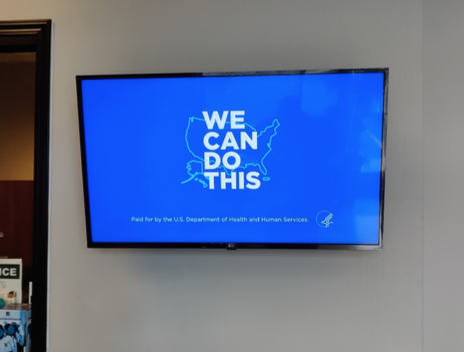Public Health: The Role of Health Awareness Posters
In a world where health is a top priority, the role of health awareness posters in promoting wellness cannot be overstated. These vibrant and eye-catching visuals have the power to educate, inspire, and motivate individuals to make positive changes in their lives. From raising awareness about the importance of vaccinations to encouraging regular exercise and healthy eating, health awareness posters play a crucial role in boosting public health. They are not only informative but also serve as powerful reminders of the steps we can take to lead healthier lives. By utilizing compelling graphics, persuasive messaging, and strategic placement, these posters have the potential to reach a wide audience and make a lasting impact. In this article, we will explore the various ways health awareness posters can be used to effectively promote wellness and contribute to a healthier society. So, let's dive in and discover the power of these visually appealing tools in boosting public health!
The Importance of Health Awareness Campaigns and Posters on Health Promotion
Health awareness campaigns have become increasingly important in today's society. These campaigns aim to educate individuals about various health issues and promote positive behavior change. Health awareness posters are a key component of these campaigns, as they provide a visual representation of important health messages. They serve as a powerful tool to grab attention and engage the audience, making complex health information more accessible and easy to understand.
One of the primary objectives of health awareness campaigns is to raise awareness about specific health issues. For example, posters can be used to educate the public about the importance of regular check-ups, early detection of diseases, and the benefits of preventive measures. By disseminating important information through visually appealing posters, these campaigns can reach a wider audience and have a greater impact on public health.
In addition to raising awareness, health awareness campaigns also aim to promote positive behavior change. Posters can be used to encourage individuals to adopt healthier habits such as exercising regularly, eating a balanced diet, and quitting smoking. These posters can inspire individuals to make positive changes in their lives and improve their overall health and well-being by providing actionable tips and motivational messages.
Health awareness campaigns are crucial for addressing public health issues and promoting wellness. Utilizing health awareness posters as an integral part of these campaigns can effectively educate and motivate individuals to take control of their health and make informed decisions.
Posters About Health Awareness
Creating an effective poster about health awareness requires a thoughtful combination of engaging visuals and informative content. The key to designing a compelling health awareness poster is to focus on clear, concise messaging that resonates with the target audience. Incorporate eye-catching graphics and bold colors to draw attention while ensuring the information is easily digestible and actionable. Whether it's about promoting healthy eating habits, the importance of regular exercise, mental health awareness, or disease prevention, the poster should aim to educate and inspire positive lifestyle changes. Utilizing relevant keywords such as "health awareness," "wellness poster," and "preventive health tips" can significantly enhance the poster's visibility and reach, especially when shared on social media platforms and health-related websites. By striking the right balance between aesthetic appeal and educational value, a health awareness poster can become a powerful tool in spreading vital health information and fostering a healthier community.
The Impact of Visual Communication in Promoting Wellness
Visual communication is a powerful tool in promoting wellness. The human brain processes images much faster than text, making visual content more memorable and engaging. When it comes to health awareness, using visuals is particularly important as it helps convey complex information in a simple and accessible way.
Health awareness posters leverage the power of visual communication to deliver important health messages effectively. These posters capture attention and evoke emotions through compelling graphics, colors, and typography. They can create a sense of urgency, empathy, or inspiration, making individuals more receptive to health information conveyed.
Visual communication is also essential for overcoming language barriers. Health awareness posters can be designed to convey information without relying heavily on text. This allows them to reach a diverse audience, including those with limited literacy or language skills. These posters can effectively communicate health messages to a wider population by using universally understood symbols and images.
Furthermore, visual communication has the ability to simplify complex health information. By breaking down complex concepts into visual representations, health awareness posters make it easier for individuals to understand and remember important health messages. This can lead to better comprehension, retention, and application of the information, ultimately promoting positive behavior change and improved public health.
In conclusion, the impact of visual communication in promoting wellness cannot be overstated. Health awareness posters harness the power of visuals to grab attention, convey important health messages, and inspire positive behavior change.
Design Elements for Effective Health Awareness Posters
Design plays a crucial role in creating effective health awareness posters. To ensure maximum impact and engagement, several key design elements should be considered.
1. Color Palette: The choice of colors can greatly influence the emotional response and attention-grabbing ability of a poster. Bright and contrasting colors can create a sense of urgency and grab attention, while softer colors can evoke a calming effect. It is important to choose colors that align with the intended message and elicit the desired emotional response.
2. Typography: The typography used in health awareness posters should be clear, legible, and visually appealing. The font size and style should be chosen to ensure easy readability from a distance. Additionally, variations in typography can be used to emphasize key messages or create hierarchy within the poster.
3. Images and Graphics: The use of relevant and compelling images and graphics can significantly enhance the visual impact of a health awareness poster. Images should be carefully selected to resonate with the target audience and effectively convey the intended message. Infographics, diagrams, and illustrations can be used to simplify complex information and make it more visually appealing.
4. Layout and Composition: The overall layout and composition of a health awareness poster should be well-balanced and visually pleasing. The placement of text, images, and graphics should be carefully considered to guide the viewer's eye and ensure a clear hierarchy of information. White space can be used strategically to enhance readability and highlight important elements.
5. Brand Consistency: If the health awareness poster is part of a larger campaign or initiative, it is important to maintain brand consistency. This includes using consistent colors, typography, and visual elements to create a cohesive and recognizable visual identity. Brand consistency helps to establish credibility and reinforce the message across different touchpoints.
By incorporating these design elements, health awareness posters can effectively engage the audience, convey important health messages, and promote positive behavior change.
Target Audience and Message Customization for Posters on Health Awareness
To maximize the impact of health awareness posters, it is essential to identify and understand the target audience. Different demographics have different health concerns and information needs, and tailoring the message to resonate with the specific audience can greatly enhance the effectiveness of the poster.
Before designing a health awareness poster, it is important to conduct thorough research to identify the target audience's demographics, psychographics, and information preferences. This can include factors such as age, gender, cultural background, and socioeconomic status. Understanding the target audience's needs, values, and motivations will allow for the creation of personalized and relevant health messages.
Once the target audience has been identified, the health message can be customized to address their specific concerns and interests. For example, a poster targeting young adults may focus on the importance of mental health and stress management, while a poster targeting parents may emphasize the benefits of childhood vaccinations. By tailoring the message to the target audience, health awareness posters can resonate more strongly and inspire action.
Additionally, it is important to consider the medium through which the target audience is most likely to encounter the poster. For example, if the target audience primarily uses social media, designing a digital poster optimized for sharing on social platforms may be more effective. Understanding the target audience's preferred communication channels will ensure that the health awareness poster reaches them in the most impactful way.
By customizing the message and delivery of health awareness posters, we can effectively engage the target audience, increase receptiveness to the health information, and inspire positive behavior change.
Distribution Channels for Health Awareness Posters
To ensure the widest reach and impact, health awareness posters should be strategically distributed through various channels. By utilizing multiple distribution channels, health awareness posters can effectively reach different segments of the population and increase the likelihood of engagement and behavior change.
1. Healthcare Facilities: Digital screens and health awareness posters in healthcare facilities such as hospitals, clinics, and doctor's offices ensures that they are seen by individuals seeking medical attention. This provides an opportunity to educate and inform patients about relevant health issues during their visits.
2. Public Spaces: Displaying health awareness posters in high-traffic public spaces such as libraries, community centers, and shopping malls can help reach a wider audience. These posters can catch the attention of passersby and spark their interest in the displayed health messages.
3. Schools and Universities: Health awareness posters in educational institutions is an effective way to target young audiences. OOH in classrooms, hallways, and common areas, students can be exposed to important health messages and encouraged to adopt healthy behaviors.
4. Workplaces: Many adults spend a significant portion of their day at work. Placing health awareness posters in workplaces can help raise awareness and promote healthy habits among employees. Posters can be displayed in break rooms, common areas, and bulletin boards to ensure maximum visibility.
5. Convenience Stores & Retailers: Leveraging convenience stores, gas stations, and other high traffic retailers can be a great way to reach high risk audiences.
By utilizing a combination of these distribution channels, health awareness posters can reach a diverse audience and have a greater impact on public health promotion.
Case Studies: Successful Health Awareness Poster Campaigns
To understand the effectiveness of health awareness posters, it is valuable to examine successful campaigns that have made a significant impact on public health. The following case studies highlight how health awareness posters have been utilized to promote wellness and inspire positive behavior change.
Case Study 1: Florida Tobacco Free, Tobacco Control Campaign
In a campaign to reduce smoking rates, a health awareness poster was developed with the aim of raising awareness about the dangers of smoking and encouraging individuals to quit. The poster featured a powerful image of a diseased lung alongside a motivational message emphasizing the benefits of quitting smoking. The poster was strategically placed in healthcare facilities, and gas stations. As a result of the campaign, there was a significant increase in smoking cessation rates and a decline in smoking-related illnesses.
Case Study 2: CDC Childhood Vaccination Campaign
A health awareness poster campaign was launched to increase childhood vaccination rates. for the CDC. The posters were designed to dispel common misconceptions about vaccines and highlight the importance of immunization. The campaign targeted parents and was distributed in healthcare facilities, schools, and community centers. As a result of the campaign, there was a notable increase in childhood vaccination rates, leading to a reduction in vaccine-preventable diseases.
Case Study 3: AdCouncil, Mental Health Awareness Campaign
To destigmatize mental health issues and promote help-seeking behaviors, a mental health awareness poster campaign was launched. The posters featured relatable images and encouraging messages, along with information about available mental health resources. The campaign utilized online platforms, social media, and educational institutions to reach the target audience. The campaign successfully increased awareness about mental health, reduced stigma, and encouraged individuals to seek support when needed.
These case studies demonstrate the power of health awareness posters in promoting wellness and inspiring positive behavior change. By utilizing effective design, targeting the right audience, and strategically distributing the posters, these campaigns were able to make a lasting impact on public health.
Evaluating the Effectiveness of Health Awareness Posters
Evaluating the effectiveness of health awareness posters is essential to assess their impact and make informed decisions for future campaigns. Several key factors can be considered when evaluating the effectiveness of health awareness posters.
1. Reach and Exposure: The reach of the health awareness poster campaign can be measured by tracking the number of impressions or views the poster receives. This can be achieved through analytics tools, social media metrics, or surveys.
2. Engagement and Interaction: Assessing the level of engagement and interaction with the health awareness posters provides insights into how effectively they are capturing attention and generating interest. This can be measured by tracking likes, comments, shares, or clicks on digital platforms, or through direct feedback from viewers.
3. Behavior Change: The ultimate goal of health awareness posters is to inspire positive behavior change. Evaluating the impact of the posters on behavior change can be challenging but can be done through surveys, interviews, or tracking relevant health indicators such as vaccination rates or smoking cessation rates.
4. Feedback and Perception: Gathering feedback and assessing the perception of the health awareness posters can provide valuable insights into their effectiveness. This can be done through surveys or focus groups to understand how the posters are perceived and whether they are successfully conveying the intended health messages.
By evaluating these factors, we can gain a comprehensive understanding of the effectiveness of health awareness posters and make data-driven decisions to improve future campaigns.
Turn-Key Public Health Collaborations
Healthcare organizations and government agencies often collaborate with Out-of-Home media company, PlaceBased. This greatly enhances the impact and reach of health awareness posters and can amplify them through digital screens within healthcare facilities. This partnership can provide access to resources, expertise, and distribution channels that may not be available otherwise.
Their network includes healthcare organizations, such as hospitals and clinics, often have existing communication networks and patient databases that can be leveraged to distribute health awareness posters. By partnering with these organizations, health awareness campaigns can reach a wider audience and benefit from the credibility and trust associated with healthcare institutions.
PlaceBased also offer collaborations with healthcare organizations and government agencies can also provide opportunities for research and evaluation. By partnering with these stakeholders, health awareness campaigns can gather valuable data and insights to assess the impact of the posters and make informed decisions for future campaigns.
By leveraging their resources, expertise, and distribution channels, these partnerships can contribute to the success of public health promotion efforts.
Conclusion: The Future of Health Awareness Posters and Their Role in Public Health Promotion
Health awareness posters have proven to be a powerful tool in promoting wellness and inspiring positive behavior change. Their ability to captivate attention, convey important health messages, and engage the audience makes them an indispensable component of health awareness campaigns.
As we look to the future, the role of health awareness posters in public health promotion will continue to evolve. Advancements in technology and digital platforms will provide new opportunities for distribution and engagement. Interactive posters, augmented reality, and personalized messaging are just a few examples of how health awareness posters can adapt to the changing needs and preferences of the audience.
Additionally, the collaboration between healthcare organizations, government agencies, and creative professionals will be crucial in harnessing the full potential of health awareness posters. By working together, we can create impactful campaigns that effectively educate, inspire, and motivate individuals to make positive changes in their lives.
In conclusion, health awareness posters have the power to boost public health by raising awareness, promoting positive behavior change, and contributing to a healthier society. Let us continue to harness the power of these visually appealing tools to create a healthier future for all.



